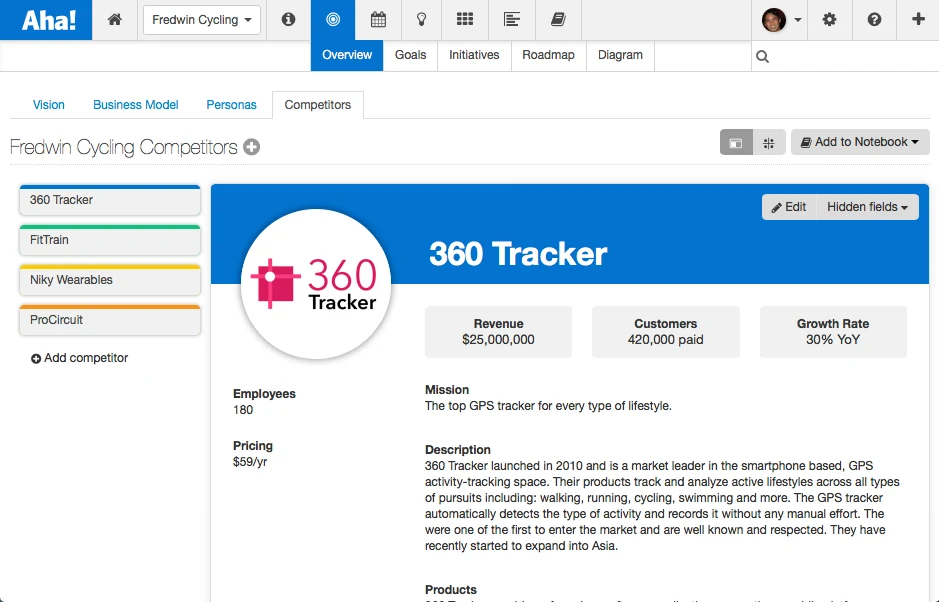
Just Launched! — Easily Track Your Competitors
Great products start with a clear vision and strategy. You need to know where you are headed and why. But you are not alone. There are other businesses in the marketplace with their own vision. And they might not play well with others. So, as you move forward in your product journey, it’s important to be aware of the competitive landscape and track movements of those around you.
You need to know your customer, market, and alternative solutions. But competitors should only help inform your product roadmap, not drive it.
If you create value and focus on the customer, good things will happen — regardless of what your competitors are doing. Regardless, they have an impact on your market, so you should understand what it is.
For most companies, competitive analysis is painful. You are stuck manipulating spreadsheets or crafting custom PowerPoint presentations — and they sure do get stale fast. Thankfully, there is now a better way. Using Aha! you can create in-depth profiles on your competitors and visualize how your product stacks up against the competition. And we make it easy to share with the team to keep everyone up-to-date.
Many of you also want to visually track your competition and how you compare. That’s why being able to plot your competitors on a chart makes a ton of sense.
That’s why today we launched a key enhancement to our competitive charting capabilities, allowing you to add your own product logos to the competitive matrix chart. This creates even more compelling visualizations that you can share with your team and key stakeholders. Here’s how it works:
Track key competitors Monitor the competition through in-depth competitive profiles. Using the Competitors screen under the Strategy - Overview tab you can capture key information such as Employees, Revenue, Customers, Pricing, and Growth Rate.
Add as many custom fields as you need to capture all the relevant information about your competition, as well as move fields to create custom layouts for your competitive profiles. And you can now upload a branded logo for each competitor, as well as a logo for your own products using the Change logo button.
Upload your own product logo to display next to your competitors on the chart.
Create and share beautiful visualizations Once your competitors are defined, you can visualize the competitive landscape by clicking the Competitor matrix view button on the top right of the screen. This enables you to visualize the competitive landscape by plotting your product against your competitors. The competitive matrix allows Aha! users to visualize where different competitors stack up against their own products.
And most importantly, you and the team can easily keep the information up-to-date and share it using Notebooks with everyone who needs to know. Just click the Add to Notebook button to add the visualization into a web page or PDF Notebook.
A Notebook is shown above with the Fredwin Cycling product plotted on a matrix against four competitors.
Customize scorecards Using scorecards you can customize what information you want to track and how it is displayed. Create a competitive threat scorecard to score your competitors and compare your own product on key market factors.
The competitive scorecard allows you to consider the metrics that matter most to your business and product.
Great product managers track competitive happenings and help their team understand them, but they obsess over their own vision and strategy.
By making it easy for you to define and track your competitors in Aha!, you can then spend time on what matters most — creating value for your customers. Remember no great company was built by selling to competitors. So, stay focused on making your product great, just don’t lose track of what’s happening in the market around you.
Sign up for a free Aha! trial — be happy Competitor tracking is available to all Aha! customers. If you are not already an Aha! customer, you may want to sign up for a free 30 day trial now. See why over 50,000 users trust Aha! to set product strategy, create visual roadmaps, prioritize features, and capture ideas.




